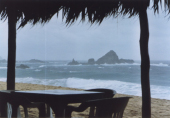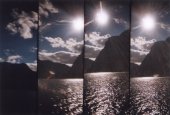Samstag, 22. September 2007
the halfmoon files
katunia, 17:44h
wird jetzt von den freunden der deutschen kinemathek vertrieben und läuft bereits in den kinos!
ich hab den film ja an anderer stelle schon einmal empfohlen und tue es hiermit erneut. dietmar kammerer schreibt in der taz über die stimme eines geistes.
und als zugabe gibt es eine text von mir, den ich letztes semester für meinen englisch-kurs geschrieben habe ... in den kommentaren. // i post a response to the film, which i wrote for an english language class, in the comments section. (www.halfmoonfiles.de)
ich hab den film ja an anderer stelle schon einmal empfohlen und tue es hiermit erneut. dietmar kammerer schreibt in der taz über die stimme eines geistes.
und als zugabe gibt es eine text von mir, den ich letztes semester für meinen englisch-kurs geschrieben habe ... in den kommentaren. // i post a response to the film, which i wrote for an english language class, in the comments section. (www.halfmoonfiles.de)
... comment
katunia,
Sa, 22. Sep. 2007, 17:56
Sounds and images – The documentary The Halfmoonfiles – a ghost story…
Four minutes last forever. On the screen I can see people jump and spin around: they are dancing some strange, jerky dance – again and again. While I feel tempted to hold my breath my eyes are detained by the image since it is all there is – the audience remains depraved of any sound – the film is silent. The material shown was filmed in a prisoner-of-war camp called Halbmondlager (Halfmoon Camp) almost a century ago. It was situated in the town of Wünsdorf, close to Berlin. The film in which it is shown is a ghost story.
Nonethless, the documentary The Halfmoonfiles – a ghost story…, written and directed by Philip Scheffner, is all about sounds and voices, songs and poems and an almost forgotten part of German history. During the First World War Germany detained hundreds of colonial soldiers in its prisoner-of-war camps. German scholars of anthropology and linguistics then decided to record their voices, languages, songs and stories in order to obtain the biggest archive of human sounds and languages. The recordings made then still remain in the Prussian Soundarchive which consits of more than 1600 shellac discs. One of the voices recorded belongs to the Punjabi soldier Mall Singh and forms the point of departure and centerpiece of the film to which Scheffner keeps returning. Singh sings about being caught in a foreign country, about having to eat food he dislikes, about hoping to return home soon and about otherwise having to die.
From there the story spreads out in many directions. The most interesting thread of the film deals with the gap between image and sound. Scheffner has discovered sound material to fill 10 documentaries but he does not have the corresponding images. Here ghostly images appear together with the voices of long dead prisoners. Landscapes full of fog and incomprehensible recordings of trees and buildings mix with the chants. In our imagination we start to interpret those images, that hold little information. Ghosts appear as we find ourselves searching for the protagonists, the White Lady or some other image to rest our eyes upon. Once Scheffner confronts us with the opposite scenario: people dancing, marching and spinning endlessly and in total silence.
Other threads evolve around the historical background of the film. Here Scheffner takes us to the town of Wünsdorf, where we get to know the location, the locals and their strange rituals. One last thread serves as a meta-narrative confronting us with the problems that Scheffner had to face concering his material. It tells the story of him trying to obtain a permission to film in India in order to find Singh’s family. Although the permission will not be given, the (re-enacted) conversations held with the Deputy Chief of Mission of the Indian embassy serve as a reflection of the production process.
“The Halfmoonfiles – a ghost story” by Philip Scheffner (2007)
www.halfmoonfiles.de
this text is published under a creative commons license: by | nc | sa !
... link
... comment








